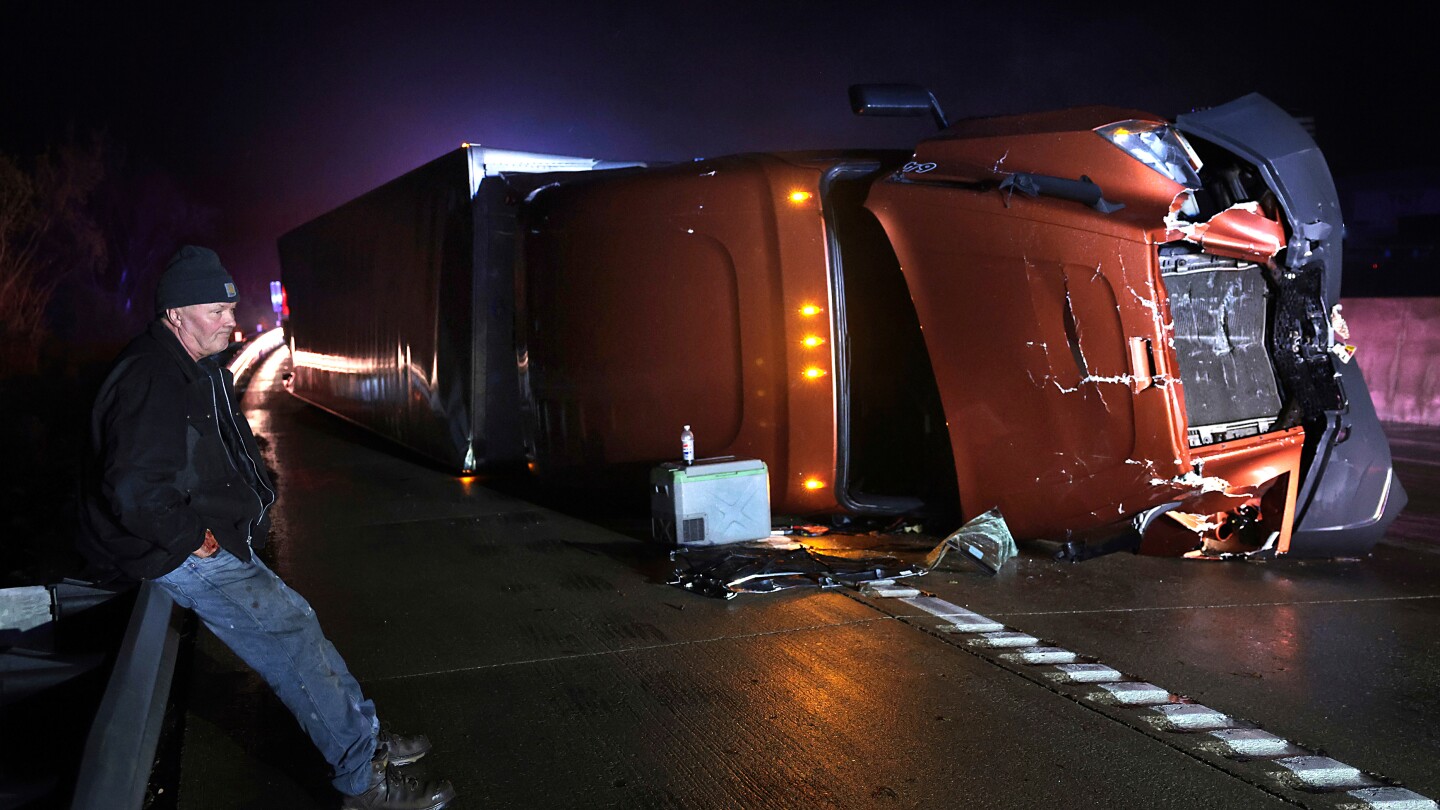Aftermath of Fury: Tornado Threat Looms Over the South as Wildfires Rage On
In the wake of a recent catastrophic storm that unleashed powerful winds across the southern United States, communities are now grappling with a looming threat of tornadoes. Simultaneously, wildfires continue to wreak havoc in various regions, leaving residents on high alert. This dual challenge of nature’s fury is prompting emergency services and local governments to prepare for the worst while providing support to those already affected by the wildfires.
The Storm’s Impact and the Tornado Threat
Just days ago, meteorologists tracked a severe storm system that swept through the southern states, causing extensive damage. High winds, heavy rain, and flash flooding were reported, leading to power outages and transportation disruptions. As the storm subsided, weather experts began monitoring conditions that could lead to the formation of tornadoes.
The National Weather Service (NWS) has indicated that the atmosphere remains unstable, creating the perfect conditions for tornadoes. Factors such as wind shear—a change in wind speed and direction at different altitudes—combined with warm, moist air are contributing to the heightened risk. Residents across Alabama, Mississippi, and Louisiana should remain vigilant, as tornado watches could be issued with little warning.
Wildfires: A Persistent Danger
While the threat of tornadoes looms, wildfires have been a devastating reality for many communities in the South. Drought conditions, exacerbated by the recent storm’s winds, have rendered vast areas ripe for ignition. Firefighters are battling several large blazes, with resources stretched thin as they face the dual threat of wildfires and potential tornadoes.
As of this week, the National Interagency Fire Center reported over 10,000 acres of land scorched in the southern states. The wildfires have forced evacuations, destroyed homes, and threatened wildlife habitats. With the wildfire season extending due to climate change, officials urge residents to remain prepared and informed.
Community Response and Preparedness
In light of these simultaneous threats, community leaders and emergency management agencies are mobilizing resources to ensure public safety. Here’s what residents can do:
- Stay Informed: Follow local weather updates through official channels such as the NWS and local news outlets. Being aware of current conditions is crucial.
- Prepare Emergency Kits: Assemble kits containing essential items such as water, non-perishable food, flashlights, batteries, and first-aid supplies.
- Evacuation Plans: Have a clear evacuation plan in place. Identify safe routes and communication methods with family members.
- Fire Safety Measures: Ensure properties are defensible against wildfires by clearing debris and maintaining a buffer of green space.
The Role of Technology in Emergency Management
As natural disasters become more frequent and severe, technology plays a pivotal role in enhancing emergency response efforts. Advanced meteorological tools provide real-time data, allowing for timely warnings and alerts. Drones are increasingly being used to assess damage and monitor wildfire spread, giving emergency responders critical information without risking human life.
Moreover, mobile applications that push notifications about severe weather conditions have become essential for keeping communities informed. Local governments are encouraged to invest in these technologies to bolster their disaster preparedness and response strategies.
Looking Ahead: Climate Change and Natural Disasters
The increasing frequency and intensity of storms, tornadoes, and wildfires can largely be attributed to climate change. As global temperatures rise, we see shifting weather patterns that contribute to extreme weather events. Understanding these changes is vital for preparing for future disasters.
Discussions around climate resilience and sustainability are becoming more prominent among policymakers. Initiatives aimed at reducing carbon emissions, promoting renewable energy, and enhancing community preparedness are essential steps in mitigating the impact of climate change on natural disasters.
Support for Affected Communities
In times of crisis, community solidarity is paramount. Numerous organizations are working tirelessly to provide relief to those affected by wildfires and storms. Here are some ways individuals can contribute:
- Donations: Consider donating to local charities and organizations that provide relief efforts, including food, shelter, and medical assistance.
- Volunteer: If safe to do so, offer time and skills to help local organizations in recovery efforts.
- Spread Awareness: Use social media platforms to inform others about the ongoing challenges and the need for support.
Conclusion: Resilience in the Face of Adversity
The aftermath of fury from recent storms presents a daunting challenge for communities in the southern United States. With tornado threats looming and wildfires raging, the resilience of these communities will be tested. However, by staying informed, preparing adequately, and supporting one another, residents can navigate these challenges effectively.
As we look to the future, the importance of understanding climate change and its impacts becomes even more critical. Together, we can build a stronger, more resilient society capable of facing the adversities brought by nature’s fury.
See more Your Daily Weather



